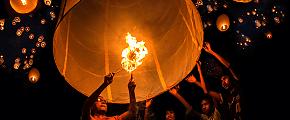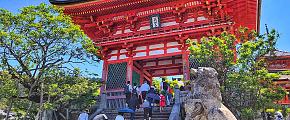10 Colorful Festivals Celebrated in China 2025
China is a multicultural country with a history dating back over 5,000 years. For such a long time, China has evolved into various forms of culture in different regions. Traditional Chinese festivals were derived from primitive beliefs in deities and the nature of ancestors, sacrificial culture, astronomy, and the Chinese calendar. It has been an integral part of China's outstanding traditional culture. China is famous for many different types of traditional festivals, including those of ethnic minorities, each of which is distinctive and breathtaking. Here is a list of 10 famous traditional festivals that you can experience during your trip to China. If you have luck with these festivals, just get involved.
Traditional Chinese Festivals
Unlike ethnic minority festivals, traditional Chinese festivals are celebrated by both Han people and other minority ethnic groups. A festival is a terrific opportunity to take in the pageantry and vibrant Chinese culture. The festivals below are well-known around the world.
Spring Festival (Date: February 17, 2026)
The spring festival is considered the most popular celebration among tourists around the world. Spring Festival, also known as Chinese New Year or Lunar New Year, falls on the first day of the first lunar month. The spring festivals carry the important cultural meaning of a happy reunion and good fortune, expressing the best wishes for the whole family and nation.
Ten more days before the lunar New Year, "Sweep the Dust" is an integral part of the festival's custom. It means a thorough cleaning of houses to sweep away bad luck from the past year in preparation for the coming year.
The spring festival includes many kinds of traditions and celebrations. The most important is Bannianhuo, which are special purchase for the Spring Festival. People will put Spring Festival couplets and a New Year picture of the upside-down Chinese character "福" (Fú) on the door or exquisite paper-cutting on the window on the day of Spring Festival. On the first day of Chinese New Year, Chinese will dress in brand new clothes. At night, the skies above the cities of China will be ablaze with spectacular fireworks, and the firecrackers will be heard one after another.
During the spring festival, you should not miss the traditional performances of the lion dance and dragon dance. You can also enjoy different types of regional theaters and major New Year's Galas on TV with the whole family.
People in different regions celebrate the spring festival in various ways. Generally, the spring festival will last 15 days until the Lantern Festival.
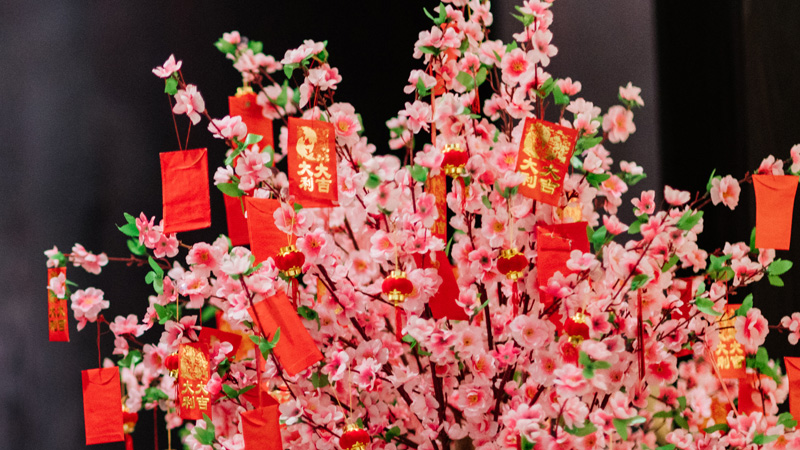 Chinese New Year Decoration
Chinese New Year Decoration
Lantern Festival (Date: March 3, 2026)
The Lantern Festival is another significant celebration following the spring festival. Yuan Xiao Jie, known as Lantern Festival, has the meaning of a night with a full moon. Lantern Festival is celebrated on the fifteenth day of the first lunar month. It includes a lantern-viewing event.
The lantern festival is full of activities, among which eating tangyuan (glutinous rice balls) is of prime importance as it is seen as a wish for reunion and prosperity. If you're celebrating the festival, try your hand at making this traditional Chinese snack.
Besides, during the festival, most of the streets of China will be illuminated by many shapes of lanterns. Children will parade along the street with a lantern in their hands. In some regions, locals will put bright lanterns on the river or lake, offering a gorgeous view of flowing lights.
Furthermore, you may also enjoy a distinctive kind of traditional folk entertainment, the lantern riddle. Riddle makers will put up the riddle on the lantern. Everyone who gives the correct answer will get rewards. You can give it a try or make your own riddle. That's full of lots of fun.
Tomb-Sweeping Day (Date: April 5, 2026)
Tomb-Sweeping Day is also named Qingming Festival, not only a traditional Chinese festival but also the fifth of the standard Chinese 24-day solar calendar. It usually falls on April 4 or April 5 every year. Tomb-sweeping is of the essence during the Qingming Festival. People go to the graves with chrysanthemums and sweep the tombs to pay respects to ancestors.
Apart from the tomb sweeping, it's a good time to have a spring outing and fly kites during the festival. During this period, the days will be warm, and the vegetation will turn green. You can go out kite flying with your children, admire the flourishing flowers, like apricot and peach blossoms, or participate in planting the willow. There are some interesting activities during the Qingming Festival. You can also play tug of war with locals and stand by your children, watching them play on a swing. In some regions, you will see fascinating entertainment: gamecock fighting.
Qingming cake, also known as green dumplings, is a traditional food for the Qingming Festival. It is made of wormwood juice, glutinous rice flour, and sweet bean paste or lotus paste. This kind of seasonal food tastes good. You can give it a try.
Dragon Boat Festival (Date: June 19, 2026)
Dragon Boat Festival, on the fifth day of the fifth lunar month, is one of four traditional Chinese festivals (the other three are Spring Festival, Tomb-Sweeping Day, and Mid-Autumn Festival). It is said that the Dragon Boat Festival is celebrated in memory of Quyuan, who was the Chu patriotic poet of the Warring States Period. He was loyal to the people and the state. Supposedly, when Chu's capital was conquered by the state of Qin, he was so heartbroken that he threw himself into the Miluo River on the fifth day of the fifth lunar month.
Many traditional customs for the festival have evolved to commemorate Quyuan. In every region of China, eating Zongzi and watching dragon boat races are outstanding.
Zongzi is the traditional food for the Dragon Boat Festival. Zongzi are pyramid-shaped dumplings made of glutinous rice with meat, peanuts, or other delicious food wrapped in bamboo leaves. It has historical meaning with the Dragon Boat Festival. Quyuan inspires people's affection and respect. In the beginning, the people of Chu threw bamboo filled with rice into the Miluo River in grief on lunar May 5th after Qu Yuan's death. This is what Zongzi initially was. Later, people replaced bamboo with bamboo leaves to wrap the rice, and eating Zongzi has gradually become an indispensable part of the festival. Of course, you can make your own Zongzi.
During the festival, people of all ages will go to the river bank to watch dragon boat races. It is said that dragon boat racing is also in honor of Quyuan. To keep the fish from eating Qu Yuan's body, people scrambled to row to retrieve his remains while scaring the fish away in the river. The boat is shaped into a gorgeous dragon for 36 participants. One participant will stand at the bow of the boat, banging the drum to encourage the team members. You will watch a close and stirring contest between two teams from different villages.
On this day, people will hang Chinese mugwort on the door to exorcise evil and honor Quyuan. You will have a chance to try red wine and fly a kite with your children, too.
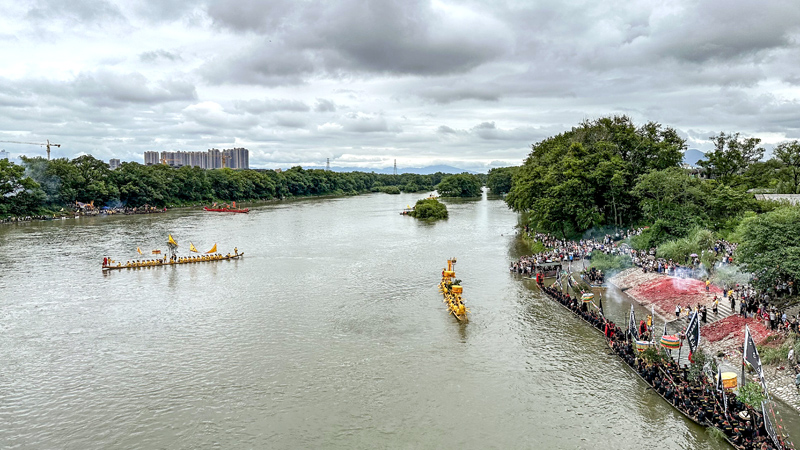 Dragon Boat Racing
Dragon Boat Racing
Double Seventh Festival (Date: August 19, 2026)
The Double Seventh Festival is also known as Chinese Valentine's Day or Qi Qiao Jie. There is a moving and romantic fairy tale behind the festival. According to legend, a couple called Niu Lang (the cowboy) and Zhi Nǚ (the weaver fairy), respectively, live separately. They can only meet on the seventh day of the seventh lunar month on the bridge made of magpies. Thus, the Double Seventh Festival raises young people's hopes for a happy marriage.
In the past, during the festival, girls would worship the weaver fairy and request a light hand for weaving. They would do sewing work and have a contest. In modern times, the festival has become more romantic. Young people typically commemorate it by giving their sweethearts flowers, chocolates, and other gifts.
In some areas, locals will hold a coming-of-age ceremony for their child, who is fifteen years old in the Chinese calendar. The child will be dressed in red, eat red eggs, and take a bite of cockscomb. In the countryside of Zhejiang Province, people will catch the dew with the basin, and the dew is said to make people nimble.
In short, the Double Seventh Festival is full of different customs among regions, and each of the customs is unique.
Mid-Autumn Festival (Date: October 6, 2025)
After the Spring Festival, the Mid-Autumn Festival is the most well-known traditional Chinese festival in the world. The Mid-Autumn Festival occurs on the fifteenth day of the eighth lunar month, when the full moon is visible in the sky. The full moon of this day is a familiar but important image in Chinese ancient poems. The full moon stands for Chinese wishes for the reunion.
So on this day, people worship the moon and eat mooncakes. Chinese place the table outside the house. They put all kinds of fruits, mooncakes, a long incense altar, and two red candles on the table. While admiring the moon and enjoying the mooncake, you will have a special experience and feeling of homesickness and reunion on that night.
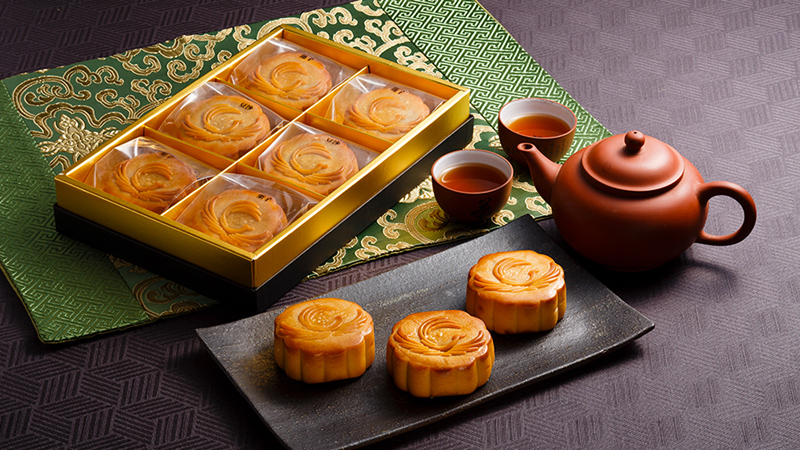 Chinese Mooncakes
Chinese Mooncakes
The date of the Mid-Autumn Festival belongs to the season when sweet-scented osmanthus flourish. You can enjoy the flowers along the street. Moreover, the sweet-scented Osmanthus wine and cakes and candy made from flowers will give you an unusual taste.
Chinese Ethnic Minority Festivals
China has 55 ethnic groups, except for the Han people. Every minority has its own customs and festivals to celebrate each year. Ethnic minority festivals are an essential part of traditional Chinese festivals. They are full of variety. Here are the top 4 minority festivals you should not miss when you visit China.
Water Splash Festival (Date: April 13 to 15, 2026)
The Water Splashing Festival is the most significant and solemn celebration for the Dai people in Xishuangbanna, Yunnan Province. The Water Splashing Festival is celebrated by a great number of ethnic minority groups in Yunnan and some countries in Southeast Asia. It was originally named Song Gan Jie. It routinely falls between April 13 and 15.
With the festival approaching, Dai people will clean their houses, make New Year's cakes, and prepare for a big dinner.
During the festival, what attracts tourists most is water splashing. Before that, locals go to the Buddhist temple to worship with flowers and leaves. People sweep the dust off the Buddha in hope of a better life in the New Year. The next activity is water splashing. Out in the streets, groups of young men and women carry water in containers of various shapes. People play and chase, splashing water at each other.
Alongside the banks of the Lancang River and Ruili River, you can watch a stirring dragon boat race, which is one of the most spectacular events during the Water Splashing Festival. At night, locals will light Kongming lanterns on the square to commemorate Zhuge Liang, an ancient Chinese sage. Locals of all ages will dress up for dancing at the festival. People sit on the square in a circle, watching "Peacock Dance" and other local dances.
Torch Festival (Date: August 7, 2026)
For the Li people of Yunnan, Guizhou, and Sichuan, the Torch Festival is a traditional and magnificent festival. People celebrate the festival on the twenty-fourth day of the sixth lunar month. It is said that the torch festival is derived from the worship of fire in the hope of de-worming and a good harvest.
During the Torch Festival, people in each village will make a torch with dry pine wood and erect it in the village. Each family will erect a small torch in front of the door and wait until night to light the torch. The village will be well-illuminated at night. People carry small torches around the fields and houses. A large number of young people will parade along the mountain with a small torch in hand. Surprisingly, you will notice a massive fire dragon crawling on the mountain. Young men and women will dance and play around the big torches all night long.
Besides, there are other many interesting entertainments during the festival, such as horse racing, bullfighting, archery, and wrestling. These days, village fairs are open for locals and tourists. You can find what attracts you at a busy fair.
Knife-Pole Festival (Date: March 26, 2026)
The Lisu People's Knife-Pole Festival takes place in Lushui County in the Nujiang Lisu Autonomous Prefecture of Yunnan Province on February 8 during the Chinese Lunar Festival. According to legend, the event honors Wangji, an old Han hero who aided the Lisu People in driving out their invaders.
Several strong Lisu men do challenging acrobatic dances in the fire. On the second day, they attach 36 razor-sharp blades to two wooden poles that are more than 20 meters long, and they put on an amazing display on the poles. Now, the ancient sacrificial ritual known as the Knife-Pole Festival serves as a superb opportunity for Lisu's strong men to put on outstanding performances. Knives are a festival staple that cannot be replaced. The most stunning rites among the festivities involve scaling a mountain of swords or diving into a sea of flames, expressing a willingness to return in good faith.
Lisu people's thrilling performance infects tourists with Lisu people's bravery and fearlessness. You can't help cheering and clapping when admiring the brilliant performance.
Mongolian Naadam Fair (Date: July 11 to 13, 2026)
Naadam Fair is a traditional Mongolian festival with a long history that features prominently in the lives of Mongols. In Mongolian, Naadam means entertainment or game, and it is used to express the joy of a good harvest. Naadam Fair is held on the wide open spaces of the prairies in July or August every year, lasting for 5 days. It was ascribed to the State-Level Non-Material Cultural Heritage List in 2006.
A variety of recreational activities will be held during the Naadam Fair. Travelers can admire breathtaking and spectacular horse racing on a vast expanse of grassland and enjoy Mongolian wrestling and archery performances. Mongolians are skilled riders and shooters due to their nomadic lifestyle. Thus, you can appreciate the most wonderful horse racing and archery in Inner Mongolia. Ordos, near the south edge of Inner Mongolia, is the best destination for travelers to see the big ceremony.
Agricultural and livestock goods sell well during the festival. You can try some traditionally delicious Mongolian foods, like beef jerky, mutton jerky, cheese, and milk curd. You can also wander around the big fair for local specialties and spend a night on the steppe in a ger.
Traditional Chinese festivals are a unique form of Chinese culture. It keeps a record of the Chinese ancestors' life full of variety with different customs and activities. Every festival will offer you a totally different experience. As a kind of intangible cultural heritage, traditional Chinese festivals have an undeniable charm that draws tourists from all over the world to visit. Celebrating China's traditional festival can enrich your children's knowledge about how ancient Chinese live and what Chinese virtue is. Anyway, China's diverse traditional festivals will satisfy your curiosity. So contact us if you plan to visit China to celebrate some festivals. Our experienced travel expert will offer you the precise date of every festival and build a tailor-made itinerary and activities for you. For more services or information about China, keep in touch with Odynovo.

